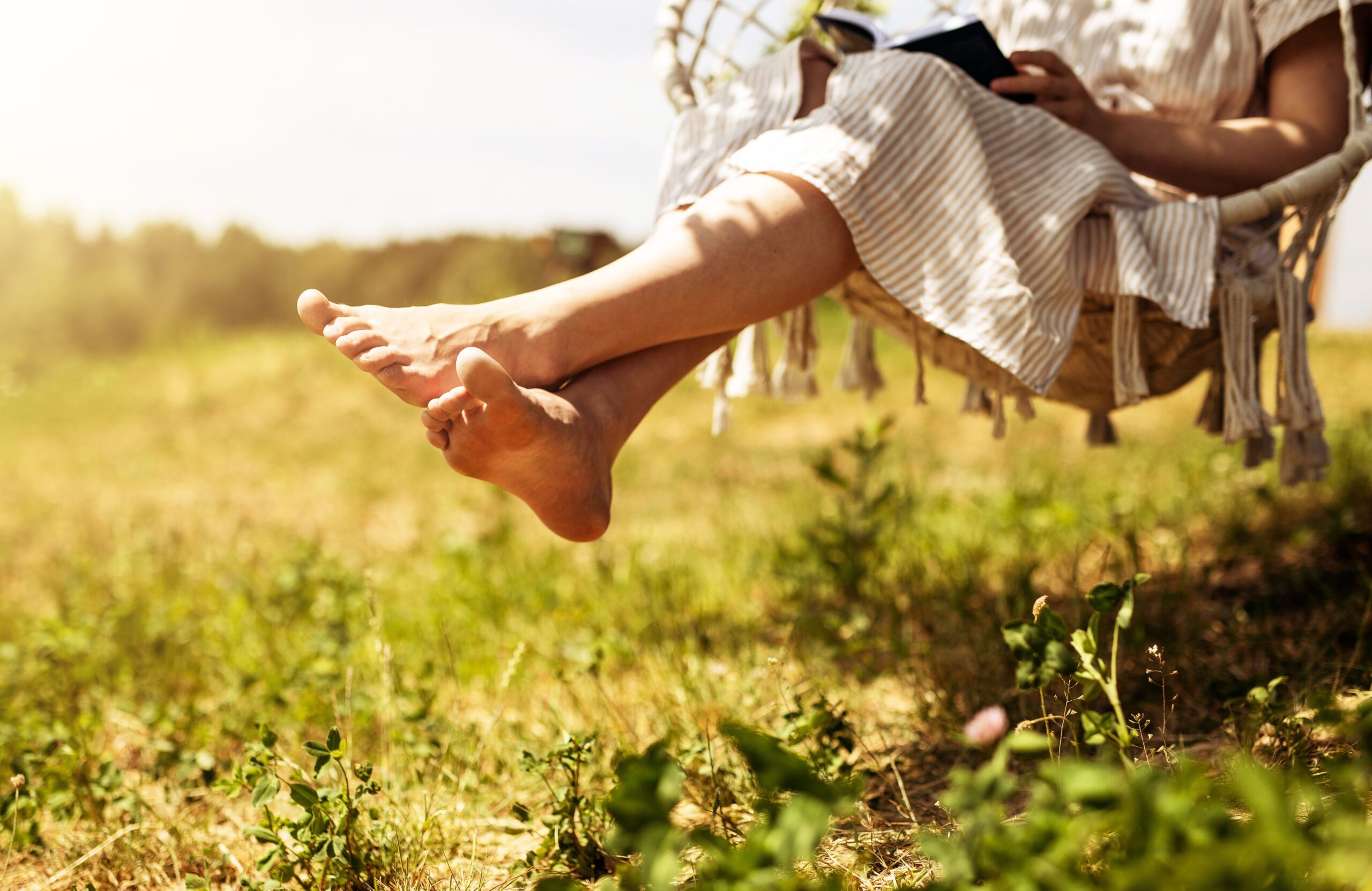Sun’s out, shoes off! How to protect your bare feet this Summer

The Appeal of Going Barefoot
There’s something undeniably freeing about kicking off your shoes and feeling the ground beneath your feet, especially in the summertime.
From beach days and backyard barbecues to poolside lounging and walks through the park, summer invites us to spend more time barefoot. And in certain situations, that can actually be good for your feet. Going barefoot can help strengthen the muscles in your feet and ankles, improve balance and coordination, and increase body awareness.
During the summer, barefoot time often increases naturally. From beach days and pool parties to backyard games and lounging around the house, it’s easy to spend more time without shoes. But before you do, it’s important to understand what your feet are being exposed to.
While barefoot time can be refreshing and even beneficial, it also comes with some risks depending on where you’re walking. At Balance Foot & Ankle, we believe in helping you make informed, confident choices for your foot health. So before you go shoeless this season, here’s what you need to know about the surfaces beneath your feet and how to keep them protected.
Common Summer Surfaces and How They Impact Your Feet
- Beach Days: Battling Sand
- Benefits: Sand offers a soft, uneven surface that encourages smaller stabilizing muscles in your feet and ankles to engage. Walking on it can act as a gentle workout and even exfoliate dry skin.
- Risks: Long beach walks can lead to overuse injuries like tendonitis, especially if you’re not used to barefoot activity. Hidden shells, sharp objects, or hot sand can also cause cuts or burns.
- Tip: Ease into beach walking gradually and bring a pair of flip flops or water shoes to protect your feet when needed.
- Parks & Yards: A Class in Grass
- Benefits: Grass is cool, soft, and gentle on the joints, making it a popular barefoot surface.
- Risks: Insect bites, hidden holes, and sharp sticks can all create issues if you’re not careful.
- Tip: Check the area before going barefoot and rinse your feet afterward to remove dirt and allergens.
- Pool Decks: Do’s and Dont’s Before the Dive
- Risks: Wet surfaces can be very slippery, leading to potential falls. Public pool areas also increase your chances of contracting conditions like plantar warts or athlete’s foot.
- Tip: Wear sandals or flip flops when walking around the pool, and dry your feet thoroughly when you’re done swimming.
- Pavement & Sidewalks: Concrete Tips
- Risks: Pavement can become extremely hot in the summer and may cause burns within seconds. It can also hide glass, nails, and other sharp debris.
- Tip: Test the ground with your hand before walking on it. If it’s too hot to touch, it’s too hot for bare feet.
- Indoors: House of Heel Pain
- Risks: Hard flooring without support can aggravate heel pain, plantar fasciitis, or other chronic foot conditions over time.
- Tip: If your feet get sore after walking barefoot indoors, try wearing soft, supportive slippers or cushioned house shoes.
When Barefoot Isn’t the Best Idea
Going barefoot isn’t safe or comfortable for everyone. If you have certain foot conditions, such as diabetes, neuropathy, or a healing wound, keeping your feet protected is critical to avoid injury or infection.
People with flat feet, high arches, or a history of chronic foot pain should also proceed with caution. If you notice discomfort or strain when walking barefoot, it’s a good idea to speak with your Balance Foot and Ankle Specialist.
Best Practices for Barefoot Time
If you’re planning to enjoy more barefoot time this season, here are a few tips to keep your feet healthy:
- Start with short periods of barefoot walking on safe, soft surfaces.
- Check your feet regularly for blisters, cuts, or signs of infection.
- Keep your skin moisturized, especially after walking on hot or dry surfaces.
- Trim your toenails regularly to prevent painful snags or breaks.
- Wear supportive footwear when needed to avoid fatigue or overuse injuries.
- Moisturize feet (especially after walking barefoot).
- Keep toenails trimmed and inspect feet regularly.
- Wear supportive sandals or shoes when needed.
Experiencing foot discomfort after going barefoot? Schedule your appointment with Balance Foot & Ankle today.!
